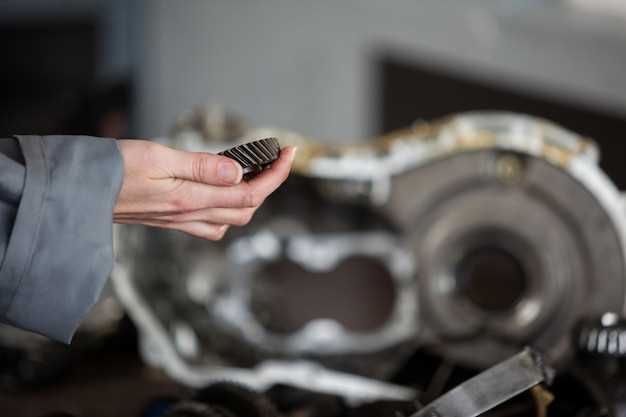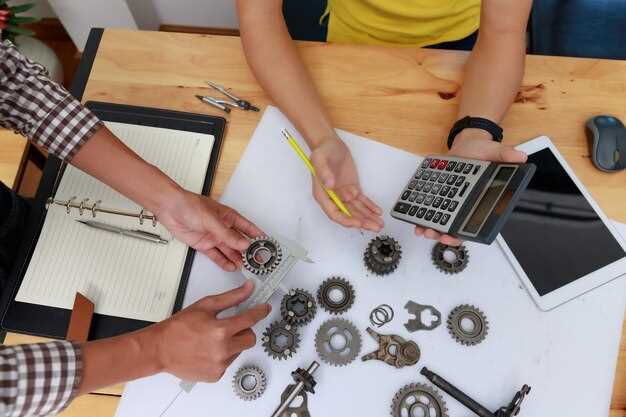
In the world of restoration, the significance of originality cannot be overstated. The choice to incorporate original parts into a restored vehicle or artifact is often a critical determinant in establishing its value. Collectors and enthusiasts alike recognize that elements sourced directly from the period of production not only preserve the authenticity of the piece but also enhance its historical significance.
When a vehicle is restored using original parts, it undergoes a transformation that goes beyond mere aesthetics. The integrity of the restoration process hinges on the authenticity of the components used. Original parts contribute to the maintained function and performance, which are paramount for true aficionados seeking to honor the craftsmanship of the original model. This adherence to authenticity can significantly elevate a restored item’s market value, distinguishing it from replicas or those using aftermarket alternatives.
Moreover, the impact of using original parts extends to the emotional and cultural connection that collectors develop with their pieces. Vehicles and artifacts are not just objects; they represent stories, memories, and the technological advancements of their time. Thus, the commitment to originality in restoration resonates deeply with enthusiasts, creating a driving force behind demand and ultimately influencing the valuation of restored items in markets worldwide.
Assessing Value: How Original Parts Influence Market Prices of Restored Classics

The value of restored classics significantly hinges on the originality of their components. Enthusiasts and collectors alike prioritize vehicles that retain their authentic parts, which not only enhances the car’s historical significance but also sustains its market appeal.
Key factors that reflect the impact of original parts on the market prices of restored classics include:
- Authenticity: Vehicles equipped with original parts are often regarded as more valuable because they represent true expressions of the manufacturer’s vision and craftsmanship.
- Rarity: Original components, especially for vintage models, may be rare or hard to find. Their scarcity can substantially increase the price of a restored classic.
- Provenance: Documented history of ownership, maintenance, and restoration enhances confidence in the authenticity of original parts, thereby positively influencing market value.
- Condition: The quality and state of original parts matter. Well-preserved components contribute to a higher valuation than parts that require significant restoration or replacement.
Collectors often seek restored classics for their investment potential. The inclusion of original parts enhances not only the aesthetic appeal but also the investment return. Market trends illustrate that vehicles with original components can fetch prices significantly higher than those with aftermarket parts.
Considering these aspects, it is crucial for restorers and collectors to evaluate the presence of original parts. Appreciation for historical accuracy will drive enthusiasts to pay a premium, reinforcing the notion that original components are central to the value of restored classics.
Certification and Verification: Ensuring Authenticity in Restored Vehicles
In the world of restored classics, authenticity is paramount. The value of a restored vehicle significantly increases when original parts and designs are preserved or replicated accurately. Certification and verification processes play a critical role in ensuring that vehicles retain their historical integrity and appeal.
Certification typically involves a formal assessment by recognized organizations specializing in classic cars. These entities evaluate the restoration work, comparing it against original specifications and standards. A certified restoration signifies that the vehicle meets a certain level of quality and authenticity, reassuring potential buyers of its value.
Verification takes this process a step further by confirming the provenance of original parts used during restoration. This often includes documentation, such as invoices or the original manufacturer’s records, which trace the history of components back to their roots. Authenticity verification not only enhances trust but also serves as a safeguard against counterfeit parts that could diminish a vehicle’s value.
Restoration enthusiasts and collectors should prioritize working with certified professionals who understand the importance of original parts. Employing experts who follow strict guidelines in both restoration and parts specification fosters a culture of excellence and maintains the vehicle’s heritage.
Moreover, buyers should seek vehicles that come with certification documents and detailed restoration histories. This transparency not only legitimizes the restoration but also provides insights into the care and expertise invested in the vehicle. In conclusion, certification and verification are essential components in the realm of restored classics, ensuring authenticity and ultimately enhancing restoration value.
Best Practices: Sourcing Original Parts for Classic Car Restoration Projects

When embarking on a restoration project for classics, sourcing original parts is crucial to maintain both authenticity and value. Here are some best practices to consider:
1. Research Before You Buy
Thorough research is essential before beginning your search for original parts. Utilize online forums, enthusiast clubs, and classic car shows to gather information about the specific parts you need. Understanding the nuances of your vehicle model can significantly affect the restoration’s outcome.
2. Network with Enthusiasts
Connecting with other classic car enthusiasts can provide valuable leads on where to find original parts. Join local or online clubs dedicated to your specific make and model to share resources and recommendations. Engaging with a community of hobbyists can lead to unexpected discoveries.
3. Utilize Reputable Vendors
Identifying reputable vendors who specialize in classic car parts can save you time and money. Check reviews and testimonials to ensure that they are known for their quality and authenticity. Established vendors often have proprietary networks that can help in sourcing hard-to-find components.
4. Attend Swap Meets and Auctions
Swap meets and classic car auctions are excellent venues for finding original parts. These events often feature vendors and collectors who have accumulated rare components over the years. Always be prepared to negotiate, as prices can vary widely.
5. Verify Part Authenticity
Before finalizing any purchase, verify the authenticity of the part. Look for identifying markings, original packaging, and any supporting documents that can confirm its provenance. This diligence not only ensures quality but also helps maintain the restored vehicle’s value.
6. Consider Reproductions Wisely
While original parts are ideal, sometimes reproductions are the only option available. Assess the quality of reproductions carefully and consider their impact on your restoration’s overall value. In certain cases, high-quality replicas can serve your project’s needs without sacrificing significant authenticity.
7. Be Patient
Sourcing original parts for classic car restoration can be a time-consuming process. Exercise patience and persistence in your search, as finding the right pieces often requires dedication. Rushing this stage can lead to subpar results that may diminish the car’s value once it is restored.
By following these best practices, restorers can enhance their chances of successfully sourcing original parts, ensuring that their classic car restoration projects not only meet high standards of quality but also maximize resale value in the long run.




